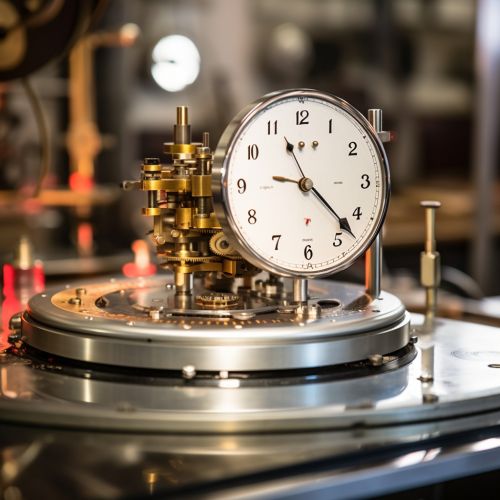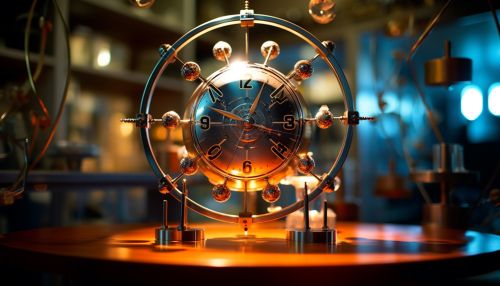The Physics of Atomic Clocks and Timekeeping
Introduction
Atomic clocks are the most accurate timekeeping devices known to man. They operate on the principles of quantum mechanics, using the vibrations of atoms to measure time with incredible precision. This article will delve into the physics behind these remarkable devices, exploring topics such as atomic oscillations, time dilation, and the role of atomic clocks in modern technology and scientific research.


The Atom and Timekeeping
The basic principle behind atomic clocks is the measurement of the frequency of atomic oscillations. Atoms are composed of a nucleus of protons and neutrons, surrounded by a cloud of electrons. These particles are constantly in motion, creating a natural frequency of vibration. This frequency is incredibly consistent, making it an ideal basis for timekeeping.
In an atomic clock, the frequency of these atomic oscillations is measured using a process known as resonance. This involves exposing the atoms to a specific frequency of electromagnetic radiation. When the frequency of this radiation matches the natural frequency of the atoms, they absorb the energy and enter an excited state. This state is unstable, and the atoms quickly return to their ground state, releasing energy in the process. By measuring the energy released, scientists can determine the frequency of the atomic oscillations and use this to keep time.
Types of Atomic Clocks
There are several types of atomic clocks, each using a different atom to measure time. The most common types are the cesium and rubidium atomic clocks.
Cesium atomic clocks use the oscillations of cesium-133 atoms to keep time. These clocks are incredibly accurate, capable of keeping time to within a few billionths of a second per day. This accuracy has led to the adoption of the cesium atomic clock as the international standard for timekeeping.
Rubidium atomic clocks, on the other hand, use the oscillations of rubidium-87 atoms. While not as accurate as cesium clocks, rubidium clocks are smaller, cheaper, and easier to maintain, making them a popular choice for many applications.
Time Dilation and Atomic Clocks
One of the most fascinating aspects of atomic clocks is their ability to measure the effects of time dilation, a phenomenon predicted by Einstein's theory of relativity. According to this theory, the passage of time is not constant, but can be affected by factors such as gravity and velocity.
Atomic clocks are so precise that they can measure these minute changes in the passage of time. For example, an atomic clock placed at a higher altitude, where gravity is weaker, will run slightly faster than one at sea level. Similarly, an atomic clock moving at high speeds will run slower than one at rest. These effects have been confirmed in numerous experiments, providing strong evidence for the validity of Einstein's theory.
Applications of Atomic Clocks
Atomic clocks play a crucial role in many areas of modern technology and scientific research. They are used in telecommunications to synchronize networks, in GPS systems to provide accurate positioning data, and in scientific research to measure physical constants and test theories of physics.
One of the most exciting potential applications of atomic clocks is in the field of quantum computing. Quantum computers operate on the principles of quantum mechanics, the same principles that underlie atomic clocks. By harnessing the precision of atomic clocks, scientists hope to develop quantum computers capable of performing calculations far beyond the reach of conventional computers.
Conclusion
Atomic clocks are a testament to the power and precision of modern physics. By harnessing the fundamental properties of atoms, these devices provide us with an incredibly accurate method of timekeeping, enabling advances in technology and scientific research. As our understanding of the atom continues to grow, so too will the capabilities of atomic clocks, opening up new possibilities for the future.
